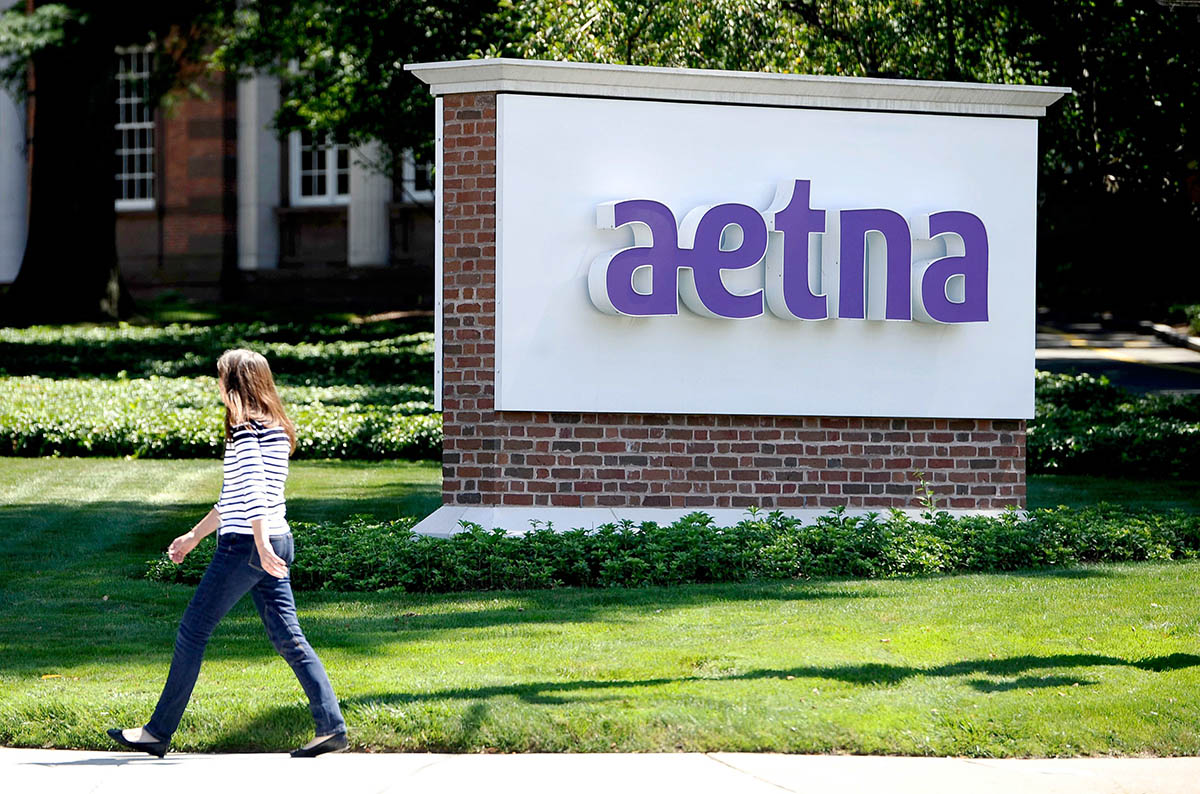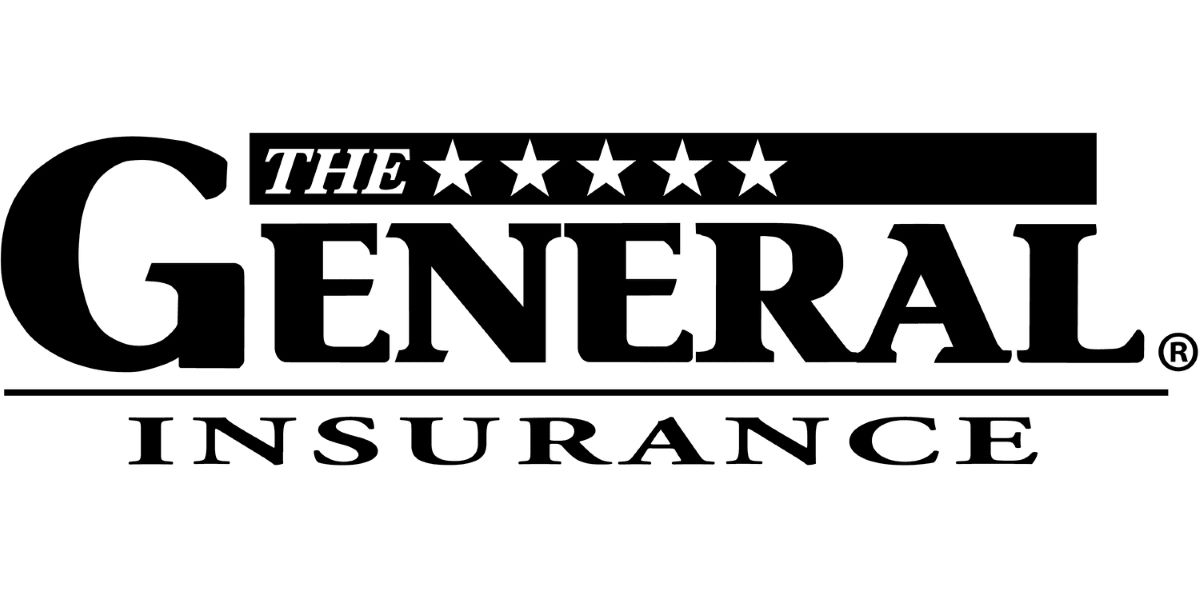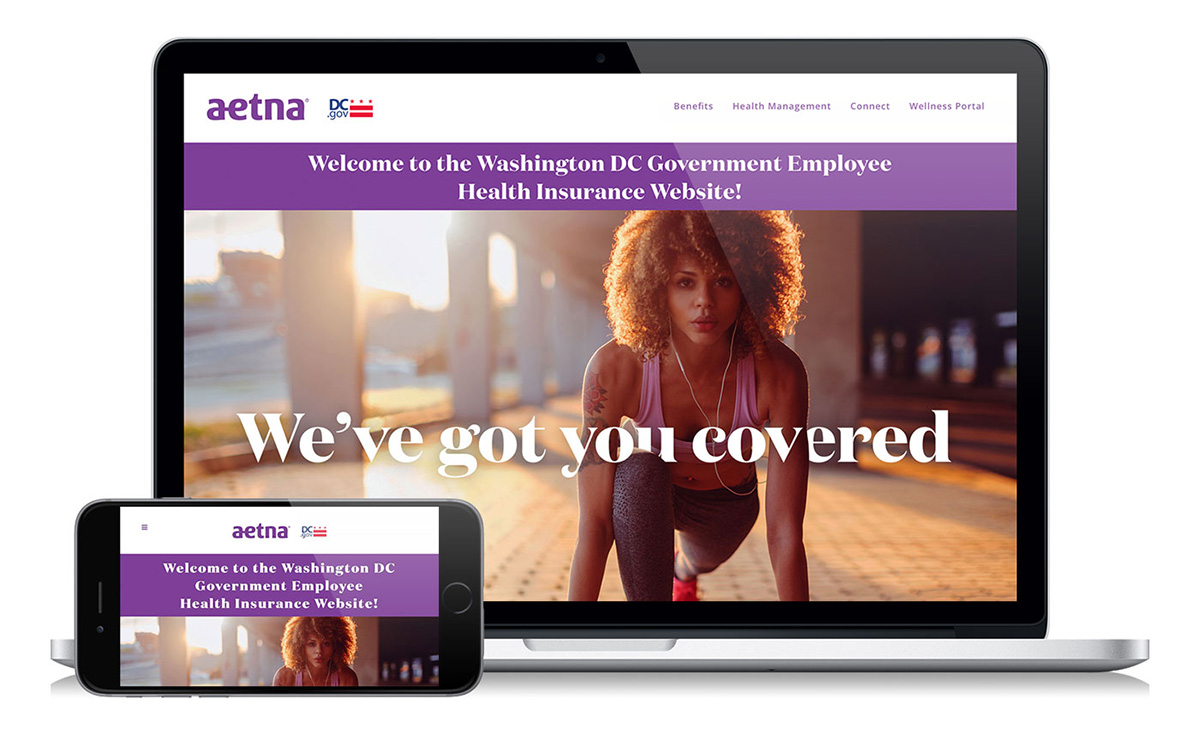

Finance
Who Bought Aetna Life Insurance Company?
Published: November 20, 2023
Find out who acquired Aetna Life Insurance Company and uncover the latest updates in the world of finance. Stay informed and make prudent financial decisions.
(Many of the links in this article redirect to a specific reviewed product. Your purchase of these products through affiliate links helps to generate commission for LiveWell, at no extra cost. Learn more)
Table of Contents
Introduction
When it comes to major acquisitions in the finance and healthcare industries, one recent transaction that caught the attention of many was the purchase of Aetna Life Insurance Company. Aetna, a prominent and long-standing insurance provider, was acquired by CVS Health, a leading healthcare services company.
With Aetna’s strong reputation for providing quality insurance coverage and CVS Health’s extensive network of pharmacies and healthcare clinics, the merger between these two entities created a formidable force in the industry. The transaction not only had significant implications for the companies involved but also raised questions about the future of the insurance and healthcare sectors.
In this article, we will delve into the details of the Aetna acquisition, exploring the background of Aetna Life Insurance Company, the process of the merger with CVS Health, and the potential implications of this deal for both companies and their stakeholders.
By understanding the motivations behind the acquisition and the potential impact it may have, readers will gain insights into how this transaction reshapes the landscape of the finance and healthcare industries. Additionally, we will touch on the financial implications of the acquisition and what it means for Aetna policyholders.
So, let’s dive into the fascinating story of who bought Aetna Life Insurance Company and explore the intricacies of this significant deal in the world of finance and healthcare.
Background of Aetna Life Insurance Company
Aetna Life Insurance Company, now a subsidiary of CVS Health Corporation, has been a prominent player in the insurance industry for more than 160 years. Founded in 1853, Aetna initially focused on offering life insurance policies to individuals and families.
Over time, Aetna expanded its product line and diversified into various insurance sectors, including health insurance, dental insurance, vision insurance, and disability insurance. This expansion allowed Aetna to cater to the evolving needs of its customers and establish itself as one of the top insurance providers in the United States.
Throughout its history, Aetna has consistently demonstrated a commitment to delivering quality insurance coverage and exceptional customer service. The company has built a strong reputation for its financial stability, reliable claims processing, and extensive network of healthcare providers.
In addition to its insurance operations, Aetna has also been actively involved in advancing healthcare initiatives and promoting public health. The company has been a supporter of various health-related research programs and has implemented initiatives to improve accessibility and affordability of healthcare services.
Aetna’s success can be attributed to its ability to adapt to changing market conditions and embrace innovation. The company has embraced technological advancements, offering online tools and mobile applications to enhance customer experience and streamline administrative processes.
With a long-standing commitment to providing reliable insurance coverage and a strong track record of financial performance, Aetna earned the trust and loyalty of millions of policyholders across the United States.
Now that we have a better understanding of the background and reputation of Aetna Life Insurance Company, let’s delve into the details of its acquisition by CVS Health and the implications of this merger for both companies and the insurance industry as a whole.
Acquisition of Aetna by CVS Health
In a transformative move for both companies, CVS Health Corporation acquired Aetna Life Insurance Company in a landmark deal worth billions of dollars. The acquisition, announced in 2017 and completed in 2018, marked a significant milestone in the finance and healthcare industries.
The acquisition was seen as a strategic move by CVS Health to further expand its presence in the healthcare sector and create a unique integrated healthcare delivery model. By combining Aetna’s insurance expertise with CVS Health’s extensive network of pharmacies and healthcare clinics, the merged entity aimed to provide comprehensive and convenient healthcare services.
As part of the acquisition, Aetna became a wholly-owned subsidiary of CVS Health, operating under the CVS Health umbrella. This integration allowed for a seamless coordination of functions between the two companies, enabling them to work together more closely and streamline operations.
The acquisition of Aetna by CVS Health was driven by several key factors. Firstly, it aimed to capitalize on the growing trend of consumer demand for more convenience in healthcare services. By merging insurance coverage with access to prescription medications and healthcare services, the combined entity aimed to provide a one-stop solution for customers’ healthcare needs.
Secondly, the acquisition aimed to leverage Aetna’s vast customer base and extensive data resources to improve patient outcomes and drive more personalized healthcare. With access to Aetna’s wealth of health data, CVS Health envisioned the development of innovative programs and services to enhance preventive care and chronic disease management.
Lastly, the acquisition allowed CVS Health to diversify its revenue streams and reduce dependency on its retail pharmacy business. By expanding into the insurance sector, CVS Health aimed to create a more balanced portfolio and capture additional revenue streams from insurance premiums.
Overall, the acquisition of Aetna by CVS Health represented a strategic move to reshape the healthcare landscape and enhance the delivery of healthcare services. The merger aimed to create a seamless and integrated healthcare experience for customers, combining insurance coverage, pharmacy services, and healthcare delivery under one unified entity.
With the acquisition completed, the next step was to navigate the merger process and obtain the necessary regulatory approvals. In the following section, we will explore the details of this process and the conditions that were involved in the merger between Aetna and CVS Health.
Overview of CVS Health
CVS Health Corporation, the acquiring entity in the Aetna acquisition, is a prominent healthcare services company with a long history in the industry. Originally established as a retail pharmacy chain in 1963, CVS Health has grown to become one of the largest and most influential players in the healthcare sector.
CVS Health operates a vast network of retail pharmacies across the United States, providing prescription medications, over-the-counter drugs, and a wide range of healthcare products. With thousands of locations nationwide, CVS Health has established itself as a trusted destination for individuals seeking their pharmaceutical needs.
In addition to its retail pharmacy operations, CVS Health has expanded its services to include various healthcare offerings. The company runs MinuteClinic, a retail medical clinic that provides convenient, walk-in healthcare services for minor illnesses and injuries, vaccinations, and preventive care.
Furthermore, CVS Health offers specialty pharmacy services, catering to patients with complex medical conditions who require specialized medications and personalized care. Through its Caremark division, CVS Health operates one of the largest pharmacy benefits management (PBM) businesses in the United States, providing prescription drug coverage to millions of Americans.
CVS Health has also made strides in digital health technology, with the development of innovative healthcare solutions aimed at empowering patients and improving outcomes. The company has invested in telemedicine platforms and mobile apps to enhance access to healthcare services and provide convenient solutions for patients.
With a strong focus on driving patient outcomes, CVS Health is committed to promoting wellness and preventive care. The company has developed various programs to encourage healthy living, such as smoking cessation initiatives, weight management programs, and chronic disease management services.
As a result of its extensive operations and strategic initiatives, CVS Health has positioned itself as a leading player in the healthcare industry. The acquisition of Aetna was a pivotal move for CVS Health, allowing the company to expand its reach and capabilities beyond retail pharmacy and become a more comprehensive healthcare services provider.
Now that we have gained an understanding of the overview of CVS Health and its vast healthcare offerings, let’s explore the process of the merger between Aetna and CVS Health and the regulatory approvals it required.
Merger Process between Aetna and CVS Health
The merger process between Aetna and CVS Health was a complex undertaking that required careful planning, coordination, and regulatory approvals. The two companies worked together to navigate the process and ensure a smooth transition into a merged entity.
The merger process began with the announcement of the deal in 2017, followed by extensive negotiations between the leadership teams of Aetna and CVS Health. These negotiations involved discussions on a range of topics, including the terms of the acquisition, integration plans, and the overall strategic direction of the merged entity.
After the initial agreement was reached, the merger required clearance from various regulatory authorities. This included obtaining approval from state insurance regulators, as well as the U.S. Department of Justice (DOJ) and the Federal Trade Commission (FTC) to ensure compliance with antitrust laws and prevent any potential negative impact on competition.
The regulatory approval process involved a thorough examination of the potential impact of the merger on consumers, policyholders, and the healthcare industry as a whole. The DOJ and FTC conducted extensive reviews to assess whether the merger would result in any anti-competitive practices or hinder consumer choice in the insurance and healthcare markets.
During this process, Aetna and CVS Health had to provide detailed information and data to address any concerns raised by regulatory authorities. They also had to demonstrate that the merger would bring about positive outcomes, such as improved access to healthcare services, enhanced patient outcomes, and cost savings for consumers.
After a comprehensive review, the regulatory authorities granted their approval for the merger, with certain conditions attached to ensure compliance with antitrust regulations. These conditions often included divestitures of certain assets or operations to preserve competition in specific markets.
Once the regulatory approvals were obtained, the merger transition process began. This involved aligning the systems, processes, and operations of Aetna and CVS Health to create a unified and integrated entity. Additionally, it required addressing any cultural or organizational differences between the two companies to foster a seamless integration.
The integration process also included the integration of technological systems and data resources to enhance collaboration and improve the delivery of healthcare services. This allowed for better coordination between insurance coverage, pharmacy services, and healthcare delivery, resulting in a more streamlined and efficient experience for customers.
Overall, the merger process between Aetna and CVS Health was a multi-faceted endeavor that spanned negotiations, regulatory approvals, and integration efforts. The successful completion of this process marked a significant milestone in the transformation of the healthcare industry and positioned the merged entity for future growth and innovation.
Regulatory Approvals and Conditions
The merger between Aetna and CVS Health required approval from various regulatory authorities to ensure compliance with antitrust laws and protect consumer interests. Obtaining these approvals involved a thorough review process and the fulfillment of certain conditions to address any potential concerns.
The regulatory approvals were necessary to ensure that the merger would not result in anti-competitive practices or hinder consumer choice in the insurance and healthcare markets. The two primary regulatory bodies involved in the approval process were the U.S. Department of Justice (DOJ) and the Federal Trade Commission (FTC).
The DOJ and FTC conducted extensive reviews to assess the potential impact of the merger on competition, pricing, and access to healthcare services. They examined various factors, such as market concentration, potential price increases, and the potential elimination of competitors from the market.
As part of the review process, Aetna and CVS Health had to provide detailed information and data to address any concerns raised by the regulatory authorities. They had to demonstrate that the merger would result in positive outcomes, such as improved access to healthcare services, enhanced patient outcomes, and cost savings for consumers.
After a comprehensive review, the regulatory authorities granted their approval for the merger, but with certain conditions attached. These conditions were put in place to ensure that the merger did not have any adverse effects on competition or consumer welfare.
One common condition imposed on the merger was the requirement to divest certain assets or operations to preserve competition in specific markets. This was done to prevent the merged entity from gaining excessive market power in certain regions or sectors.
In some cases, divestitures were required in specific geographic areas where the merger was believed to reduce competition. This was done to maintain a competitive marketplace and prevent any potential negative impact on pricing and consumer choice.
The regulatory authorities also imposed conditions related to the protection of consumer rights and privacy. This included requirements for the protection of sensitive health data and the adherence to relevant privacy regulations to ensure the confidentiality and security of patient information.
Compliance with the regulatory conditions was a vital aspect of the merger process. Aetna and CVS Health had to fulfill these conditions within the specified timelines, under the supervision of the regulatory authorities. Failure to meet these conditions could have resulted in penalties or even the potential reversal of the merger.
Overall, the regulatory approval process and the attached conditions were crucial in ensuring that the merger between Aetna and CVS Health did not have any negative consequences for competition or consumer welfare. The successful fulfillment of these conditions allowed the merged entity to move forward and reshape the healthcare landscape.
Financial Implications of the Acquisition
The acquisition of Aetna by CVS Health had significant financial implications for both companies and their stakeholders. The deal involved a substantial financial investment and was expected to bring about various opportunities and challenges in terms of profitability, revenue synergies, and cost savings.
One of the primary financial implications of the acquisition was the cost associated with the purchase itself. CVS Health acquired Aetna for a substantial amount, reflecting the value of Aetna’s established business and customer base. This investment signaled CVS Health’s commitment to expanding its presence in the healthcare sector and diversifying its revenue streams.
Furthermore, the acquisition allowed CVS Health to create a more integrated and comprehensive healthcare delivery model, leveraging Aetna’s insurance coverage with its extensive network of pharmacies and healthcare clinics. This integration aimed to capture revenue synergies by offering a broader range of services to customers and driving increased utilization of the combined entity’s healthcare offerings.
From a cost-saving perspective, the merger presented opportunities for operational efficiencies and economies of scale. By combining their operations and streamlining administrative processes, Aetna and CVS Health aimed to reduce costs and improve overall profitability. This included aligning their systems and infrastructure to eliminate duplication and improve workflow efficiency.
Additionally, the acquisition was expected to result in synergies through the sharing of data and resources. Aetna’s extensive health data, when combined with CVS Health’s technology and analytical capabilities, had the potential to drive innovations in healthcare delivery and improve patient outcomes. These synergies could lead to cost savings by optimizing treatment plans, reducing unnecessary medical expenses, and improving the overall efficiency of healthcare services.
Despite the potential financial benefits, acquisitions also come with financial risks and challenges. Integrating two large organizations, such as Aetna and CVS Health, involves significant costs and complexities. The merging of systems, cultures, and processes can lead to initial disruptions and potential inefficiencies, impacting financial performance in the short term.
Additionally, there may be challenges in managing the financial impact of regulatory changes and market dynamics. The insurance and healthcare industries are subject to evolving regulations and reforms, which can impact reimbursement rates, pricing models, and profitability. Aetna’s policies and operations had to align with CVS Health’s strategies and adapt to any changing market conditions.
Overall, the financial implications of the acquisition of Aetna by CVS Health were significant, encompassing investments, revenue synergies, cost savings, and potential risks. The successful integration of these two entities would position the merged company for financial growth and consolidation in the competitive healthcare landscape.
Impact on Aetna Policyholders
The acquisition of Aetna by CVS Health had a significant impact on Aetna policyholders. On one hand, policyholders gained access to an expanded range of healthcare services and increased convenience, while on the other hand, they experienced changes in their insurance coverage and provider networks.
One of the positive impacts of the acquisition was the increased access to healthcare services for Aetna policyholders. With CVS Health’s extensive network of pharmacies and healthcare clinics, policyholders gained convenient access to prescription medications, over-the-counter drugs, and a wide range of healthcare products. This integration aimed to provide a one-stop solution for all their healthcare needs.
Furthermore, the integration of Aetna’s insurance coverage with CVS Health’s healthcare services allowed policyholders to benefit from a more integrated and coordinated healthcare experience. The merged entity aimed to enhance patient outcomes through the availability of more personalized care, improved preventive care programs, and better coordination of treatment plans.
However, the acquisition also resulted in changes to policyholders’ insurance coverage and provider networks. CVS Health’s network of healthcare providers and pharmacies may differ from Aetna’s previous network. Policyholders may have needed to adjust to new providers or ensure that their preferred healthcare professionals were still in-network under the new arrangement.
As part of the integration process, Aetna policyholders also had to adapt to any changes in administrative processes, such as claims processing and customer service. The merging of systems and operations between Aetna and CVS Health aimed to streamline these processes but could have caused initial disruptions and the need for policyholders to familiarize themselves with any changes.
Clear communication and support for policyholders were essential during the transition. The merged entity made efforts to inform policyholders about any changes to their insurance coverage, provider networks, and administrative procedures. They also provided assistance in navigating the new healthcare system and addressing any questions or concerns that policyholders may have had.
Overall, the impact on Aetna policyholders varied. They gained access to a wider range of healthcare services and increased convenience through CVS Health’s network, but they also experienced changes in their insurance coverage and provider networks. The successful integration of Aetna and CVS Health aimed to provide a more integrated and coordinated healthcare experience for policyholders, ultimately improving patient outcomes and enhancing the overall quality of care.
Conclusion
The acquisition of Aetna Life Insurance Company by CVS Health Corporation marked a significant milestone in the finance and healthcare industries. This transformative merger created a formidable force in the market, combining Aetna’s insurance expertise with CVS Health’s extensive network of pharmacies and healthcare clinics.
The merger aimed to provide policyholders with a more integrated and comprehensive healthcare experience, offering a one-stop solution for their insurance coverage, pharmacy needs, and healthcare services. It sought to enhance patient outcomes, improve access to healthcare services, and drive cost savings.
Throughout the merger process, Aetna policyholders experienced changes in their insurance coverage, provider networks, and administrative processes. However, they also gained access to an expanded range of healthcare services and increased convenience through CVS Health’s extensive healthcare network.
The successful completion of the merger required obtaining regulatory approvals and fulfilling conditions to ensure compliance with antitrust laws and protect consumer interests. The merged entity navigated these complexities and positioned itself for future growth and innovation in the healthcare industry.
Financially, the acquisition had significant implications, with investments, revenue synergies, cost savings, and potential challenges to manage. The merged entity aimed to capitalize on operational efficiencies, economies of scale, and data sharing to drive profitability and deliver value to shareholders.
In conclusion, the acquisition of Aetna by CVS Health reshaped the healthcare landscape, bringing together insurance coverage, pharmacy services, and healthcare delivery under one unified entity. This integration aimed to provide policyholders with improved access to healthcare and a more coordinated healthcare experience. The successful completion of the merger positioned the combined company for future success in an ever-evolving healthcare industry.














